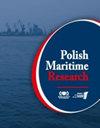集装箱船装载模型回顾-货物毁损和/或灭失原因分析
IF 2
3区 工程技术
Q2 ENGINEERING, MARINE
引用次数: 0
摘要
随着集装箱海上运输的不断发展和集装箱船舶在设计和建造方面的变化,确保这种运输的适当安全水平是很重要的。几十年来,集装箱船的尺寸和载货能力一直在变化,其操纵限制和所需的稳定性标准也在变化。条例的改变、技术的发展和稳定性要求的增加似乎没有产生令人满意的结果- -集装箱船事故的原因继续显示出类似的模式。本文涉及确保海上集装箱运输安全的问题,特别侧重于货物过程。其目的是确定导致集装箱在海上灭失的因果关系,并开发一种可以显著提高集装箱运输安全水平的装载模型。这篇文章提供了与天气条件、装载方法或稳定性限制有关的对船舶的威胁的一般描述。根据2015-2019年的数据,对集装箱船舶货物损坏和/或灭失的发生情况进行了统计分析,并对货物灭失风险进行了评估。为此使用了帕累托图。提出了集装箱船装载模型的概念,对今后提高船舶的安全性有一定的帮助。本文章由计算机程序翻译,如有差异,请以英文原文为准。
Review of the Container Ship Loading Model – Cause Analysis of Cargo Damage and/or Loss
Abstract As the maritime transport of containers continues to grow and container ships change in terms of design and construction, it is important to ensure the appropriate level of safety for this type of transport. Over the decades, the size and cargo capacity of container ships have been changing, and so have their manoeuvring restrictions and required stability criteria. It seems that changes in the regulations, technological development and increased stability requirements are not yielding satisfactory results – the causes of container ship accidents continue to show similar patterns. The present article refers to the problem of ensuring safety in sea container transport, with a particular focus on cargo processes. Its purpose is to determine cause-and-effect relations leading to the loss of containers at sea, and to develop a model of loading that could significantly raise the level of safety of container transport. The article provides a general description of threats to ships related to weather conditions, loading methods or stability limitations. A statistical analysis of the occurrence of damage and/or loss of cargo from container ships was carried out and the risk of cargo loss was assessed on the basis of data from 2015‒2019. A Pareto diagram was used for this purpose. The authors present the concept of the container ship loading model, which may contribute to increasing the safety of shipping in the future.
求助全文
通过发布文献求助,成功后即可免费获取论文全文。
去求助
来源期刊

Polish Maritime Research
工程技术-工程:海洋
CiteScore
3.70
自引率
45.00%
发文量
20
审稿时长
>12 weeks
期刊介绍:
The scope of the journal covers selected issues related to all phases of product lifecycle and corresponding technologies for offshore floating and fixed structures and their components.
All researchers are invited to submit their original papers for peer review and publications related to methods of the design; production and manufacturing; maintenance and operational processes of such technical items as:
all types of vessels and their equipment,
fixed and floating offshore units and their components,
autonomous underwater vehicle (AUV) and remotely operated vehicle (ROV).
We welcome submissions from these fields in the following technical topics:
ship hydrodynamics: buoyancy and stability; ship resistance and propulsion, etc.,
structural integrity of ship and offshore unit structures: materials; welding; fatigue and fracture, etc.,
marine equipment: ship and offshore unit power plants: overboarding equipment; etc.
 求助内容:
求助内容: 应助结果提醒方式:
应助结果提醒方式:


